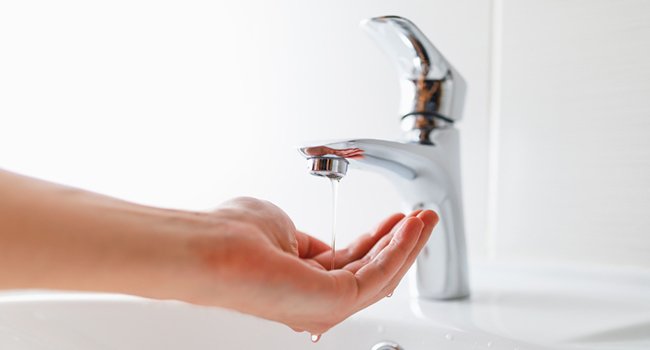My Definitive Manual to Fixing Low Water Pressure in Your Home
My Definitive Manual to Fixing Low Water Pressure in Your Home
Blog Article
The article below relating to 10 Reasons for Low Water Pressure in Your House is exceptionally enlightening. Give it a go and make your own personal ideas.

Low water pressure in your home can be a discouraging trouble, impacting every little thing from bathing to cleaning meals. If you're experiencing weak water circulation, there are numerous feasible causes and services to discover. In this guide, we'll go over usual factors for low water pressure and practical steps to resolve the issue effectively.
Introduction to Low Tide Pressure
Low water stress occurs when the flow of water from your taps, showers, and other fixtures is weak than typical. This can make everyday jobs extra difficult and less reliable. Comprehending the causes of low water pressure is vital to finding the right service.
Typical Root Causes Of Low Tide Stress
Pipe Obstructions
Gradually, pipelines can come to be clogged with mineral deposits, sediment, or debris, limiting the circulation of water. This is a typical issue in older homes with galvanized steel pipelines.
Rust
Rust within pipelines can bring about leaks and minimized water pressure. Corrosion build-up can tighten water flow, particularly in aging plumbing systems.
Faulty Stress Regulators
Stress regulators are in charge of keeping constant water stress in your house. If they malfunction, it can result in low water pressure or unequal circulation throughout the house.
Community Water System Issues
Often, the problem lies outside your home. Local water supply issues, such as main line leaks or upkeep job, can momentarily reduce water stress in your area.
How to Detect Low Water Stress
Checking Faucets and Components
Start by testing the water stress at different taps and fixtures throughout your home. If the issue is isolated to particular areas, it might indicate local issues.
Inspecting Pipes
Check noticeable pipes for signs of leakages, deterioration, or obstructions. Take note of any type of uncommon noises, such as banging or rattling pipes, which could show issues within the plumbing system.
Consulting with a Plumber
If you're incapable to identify the root cause of low water stress, take into consideration working with a professional plumber to perform a detailed assessment. They can recognize underlying problems and suggest ideal services.
Do It Yourself Solutions to Deal With Low Tide Stress
Cleansing Aerators and Showerheads
Mineral deposits can gather in aerators and showerheads, lowering water flow. Remove and clean up these parts consistently to boost water pressure.
Flushing Hot Water Heater
Sediment accumulation in the water heater can restrict circulation and lower efficiency. Purging the tank occasionally helps get rid of sediment and preserve ideal efficiency.
Checking Pressure Regulatory Authority
Ensure that the pressure regulator is operating correctly. Adjusting or changing the regulatory authority can aid restore appropriate water stress throughout your home.
Clearing Clogs in Water Lines
For small blockages, attempt utilizing a plumbing serpent or chemical drainpipe cleaner to clear blockages in pipes. Beware when utilizing chemicals and comply with safety and security guidelines.
When to Call a Specialist Plumber
If do it yourself initiatives fall short to solve the issue or if you presume significant plumbing problems, it's best to seek aid from a qualified plumber. They have the experience and tools to resolve complicated concerns securely and properly.
Preventive Measures to Maintain Water Pressure
Normal Upkeep
Arrange routine maintenance for your plumbing system to avoid concerns such as deterioration, leaks, and blockages. Dealing with minor problems early can aid prevent more substantial fixings later on.
Mounting a Pressure Booster
Think about mounting a stress booster pump to enhance water stress in areas with consistently low circulation. This can be especially advantageous for multi-story homes or homes with high-demand fixtures.
Tracking Water Use
Be mindful of water use routines and prevent ill-using the plumbing system. Basic modifications, such as incredible showers and washing tons, can aid keep adequate water stress.
Conclusion
Taking care of low water stress can be frustrating, yet determining the underlying reasons and carrying out suitable services can bring back optimum circulation throughout your home. Whether it's cleaning up aerators, inspecting pipes, or talking to a plumber, taking aggressive steps can ensure a constant supply of water for your daily demands.
FOUR WAYS TO FIX LOW WATER PRESSURE NOW
Turning on a shower or faucet only to find the water comes out in a sad, slow drizzle is never a good feeling. How exactly are you supposed to wash a pan or take a quick shower when it takes 10 minutes just to rinse off a little soap? The good news is that when your water pressure is bad, there's always a cause: typically one that can be easily fixed. Here are some of the most common causes of low pressure and what you can do to fix the issue:
DEBRIS AND MINERAL DEPOSIT BUILDUPS
If you notice low water pressure from just one or two of the fixtures in your house, the problem likely has to do with debris buildup. Water is full of minerals and other debris, all of which can accumulate in your pipes and on your fixtures. This can cause a blockage that affects how much water flows through. To fix this, try filling a small plastic bag with white vinegar, and use a rubber band to hang it around your showerhead or faucet. Let the head of the fixture soak for a few hours, and the vinegar should loosen the deposits.
WATER LEAKS
Leaks are another common cause of low water pressure. If water is flowing out of your plumbing through a hole or crack before it can reach your fixture, the pressure coming out of the faucet or showerhead will be lower. A plumbing professional is your best bet for finding and repairing a leak in your water supply pipes.
Leaks are another common cause of low water pressure. If water is flowing out of your plumbing through a hole or crack before it can reach your fixture, the pressure coming out of the faucet or showerhead will be lower. A plumbing professional is your best bet for finding and repairing a leak in your water supply pipes.
FOUR WAYS TO FIX LOW WATER PRESSURE NOW
Turning on a shower or faucet only to find the water comes out in a sad, slow drizzle is never a good feeling. How exactly are you supposed to wash a pan or take a quick shower when it takes 10 minutes just to rinse off a little soap? The good news is that when your water pressure is bad, there's always a cause: typically one that can be easily fixed. Here are some of the most common causes of low pressure and what you can do to fix the issue:
DEBRIS AND MINERAL DEPOSIT BUILDUPS
If you notice low water pressure from just one or two of the fixtures in your house, the problem likely has to do with debris buildup. Water is full of minerals and other debris, all of which can accumulate in your pipes and on your fixtures. This can cause a blockage that affects how much water flows through. To fix this, try filling a small plastic bag with white vinegar, and use a rubber band to hang it around your showerhead or faucet. Let the head of the fixture soak for a few hours, and the vinegar should loosen the deposits.
WATER LEAKS
Leaks are another common cause of low water pressure. If water is flowing out of your plumbing through a hole or crack before it can reach your fixture, the pressure coming out of the faucet or showerhead will be lower. A plumbing professional is your best bet for finding and repairing a leak in your water supply pipes.
Leaks are another common cause of low water pressure. If water is flowing out of your plumbing through a hole or crack before it can reach your fixture, the pressure coming out of the faucet or showerhead will be lower. A plumbing professional is your best bet for finding and repairing a leak in your water supply pipes.
A VALVE ISSUE
If you have low water pressure throughout your home, check your main shut-off valve to make sure it's completely open. You may also want to see if there's a pressure-reducing valve installed. If there is, have a plumber help you adjust the settings to get the pressure you're looking for.
OTHERS USING WATER
Believe it or not, your low water pressure could be caused by your neighbors. If you notice low pressure at certain times of day, it may be because you and the people living next to you have similar schedules - when everyone is showering at the same time, the pressure will be lower in every home. Low pressure throughout the neighborhood may also be caused by an issue with your municipal water supply. If that's the case, call the supplier to see if they're working on the issue.
https://www.rotorooter.com/blog/water-leaking/low-water-pressure-fixes/

We are very interested in 4 Ways to Troubleshoot Low Water Pressure and I really hope you liked our page. Don't hesitate to take the time to promote this blog if you appreciated it. We take joy in reading our article about 4 Ways to Troubleshoot Low Water Pressure.
Call Today Report this page